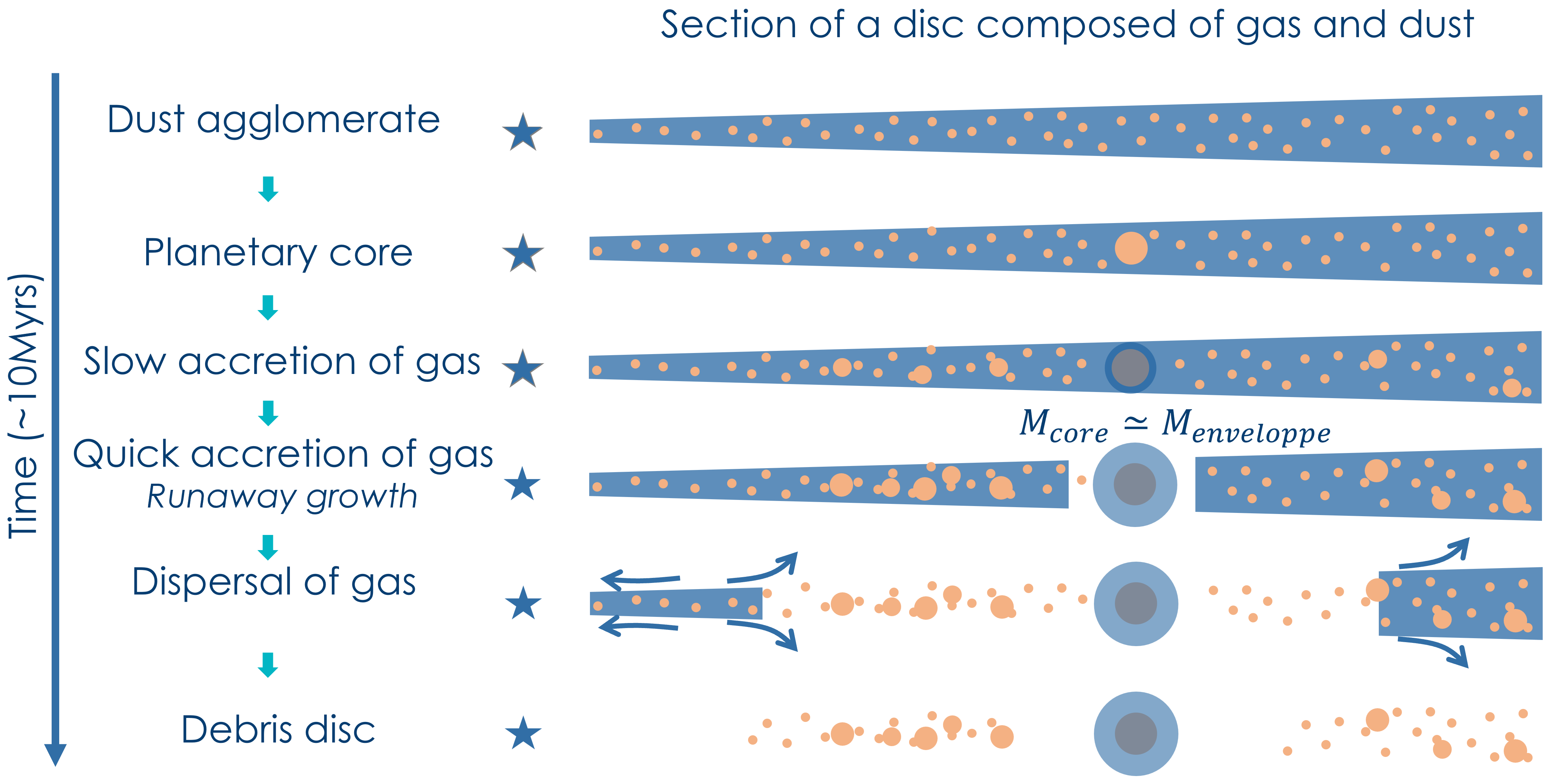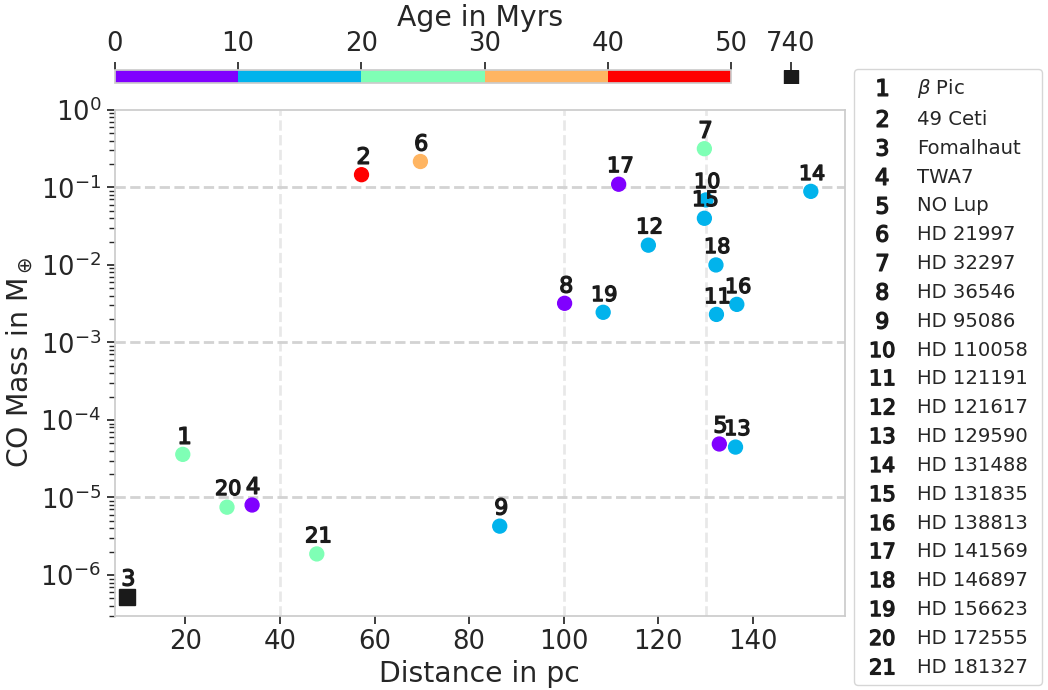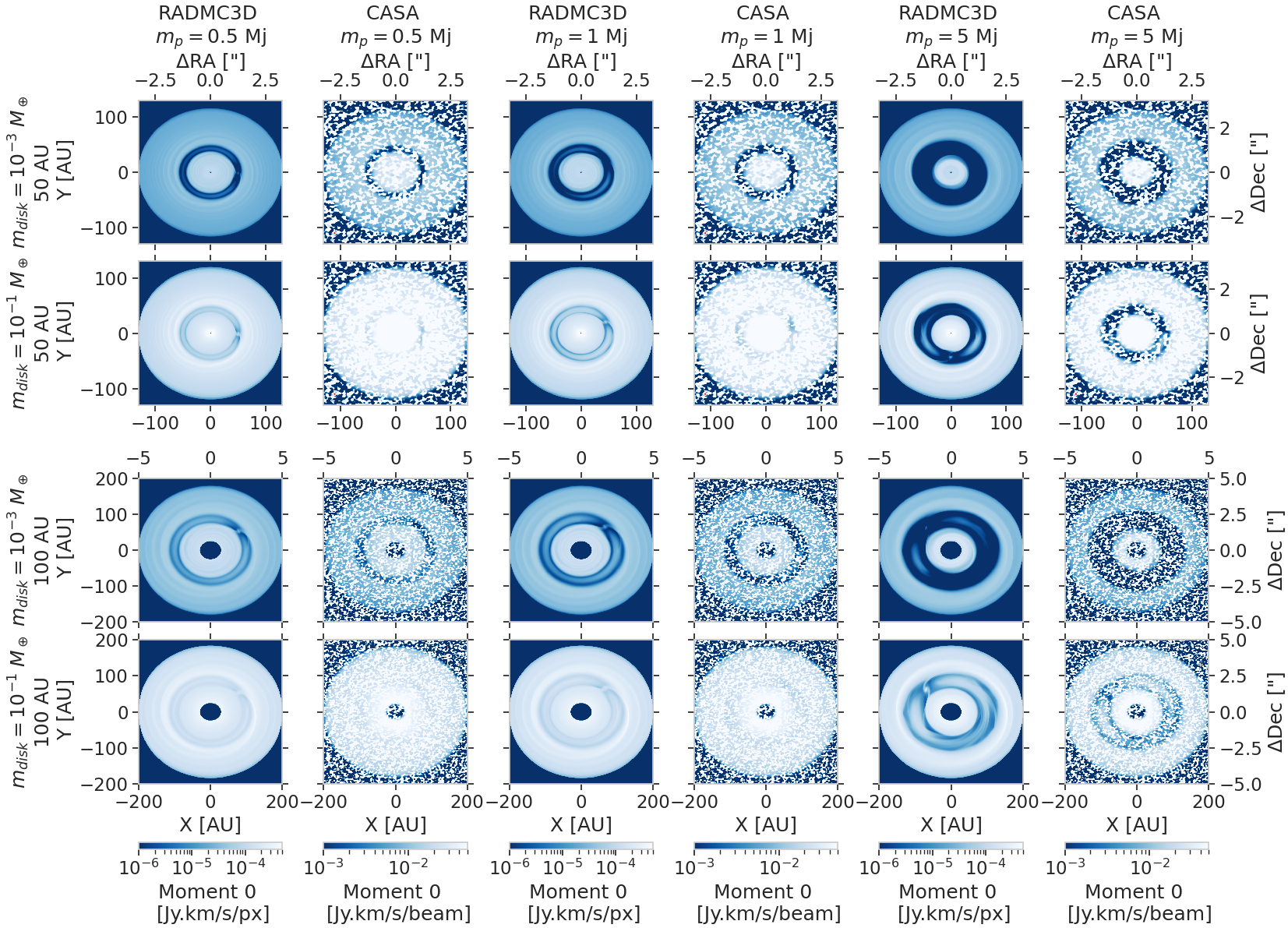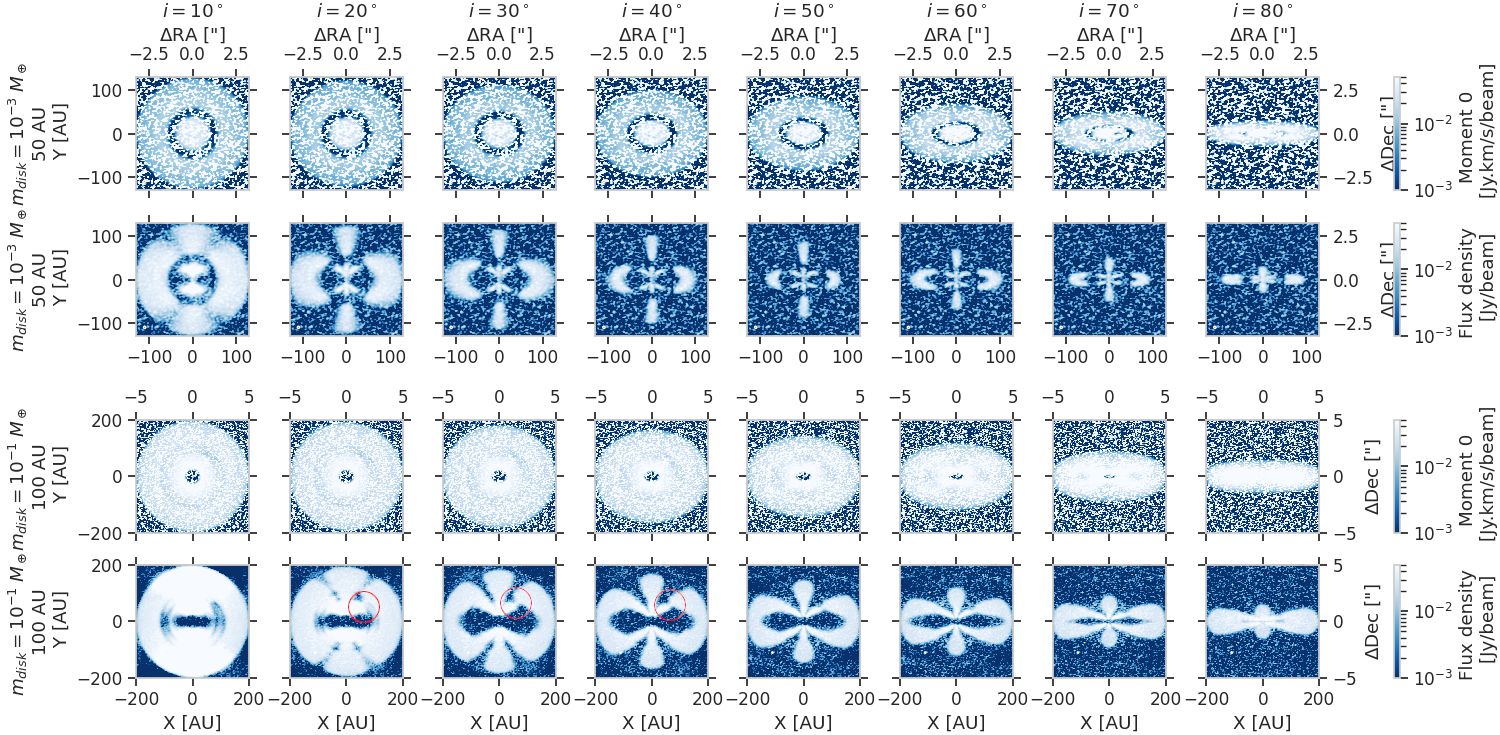Observing planetary gaps in the gas of debris discs
C. Bergez-Casalou & Q. Kral
Oct. 2024 - accepted in A&A - arxiv:2411.14241
Paper Abstract
Recent ALMA observations discovered consequent amounts (i.e., up to a few 0.1 M_Earth) of CO gas in debris disks that were expected to be gas-free. This gas is in general estimated to be mostly composed of CO, C, and O (i.e., H2-poor), unlike the gas present in protoplanetary disks (H2-rich). At this stage, the majority of planet formation already occurred, and giant planets might be evolving in these disks. While planets have been directly observed in debris disks (e.g., β Pictoris), their direct observations are challenging due to the weak luminosity of the planets. In this paper, with the help of hydrodynamical simulations (with FARGO3D) coupled with a radiative transfer code (RADMC-3D) and an observing tool (CASA), we show that planet-gas interactions can produce observable substructures in this late debris disk stage. While it is tricky to observe gaps in the CO emission of protoplanetary disks, the unique properties of the gaseous debris disks allow us to observe planetary gaps in the gas. Depending on the total mass of the gaseous debris disk, kinks can also be observed. We derive a simple criterion to estimate in which conditions gaps would be observable and apply it to the known gaseous debris disk surrounding HD138813. In our framework, we find that planets as small as 0.5 MJ can produce observable gaps and investigate under which conditions (i.e., gas and planets characteristics) the substructure become observable with ALMA. The first observations of planet-gas interactions in debris disks can lead to a new way to indirectly detect exoplanets, reaching a population that could not be probed before, such as giant planets that are too cold to be detected by direct imaging.
Context and setup
Protoplanetary discs have a lifetime of roughly 10 Myrs, during which the gas present in the system is removed by various processes (stellar and planetary accretion, photo-evaporation, winds etc...). The resulting system is composed of the newborn star, newborn planets and the remaining planetesimals and dust. These last two can form discs, equivalent to the Kuiper or asteroid belts in our Solar System, which are called debris discs. Orbiting stars which are older than a few Myrs, these discs where expected to be gas free until the recent observations of consistent amounts of gas, a little more than 10 years ago. The detection of carbon monoxide (CO), neutral and ionized carbon (CI, CII) gases in these old systems expected to be in their debris disc phase raises the question of their origin and interaction with the planets.


In this study, we focus on the observability of these interactions between the planets and this gas which properties are different to the gas in the protoplanetary disc phase: colder, enhanced in heavy elements (mostly composed of CO) and around 10 to 100 times less massive. With the help of hydrodynamical simulations to study planet/gas interactions coupled to a radiative transfer code and an observing simulation tool, we show that depending on the mass of the gas disc, these interactions are observable. Even better, some interactions that are not observable in the protoplanetary disc phase due to their massive gas disc become observable in the debris disc phase.
Initially: The discs are initialized with characteristics corresponding to the observations regarding total mass, extent, distance etc... A planet of a given mass (0.5, 1 or 5 Mj) is then slowly introduced in the simulation at different distances (10, 50 or 100 AU). Once the discs reach a quasi-steady state, we stop the simulation and use the resulting 2D gas distribution to estimate the emission of the gas. With the help of a radiative transfer code, we estimate the emission of the 12CO(J=2-1) transition in different velocity channels.
Output: The 2D emission maps are coupled to an observing simulation tool able to simulate what ALMA would see if it was observing such a disc in a given configuration. Regarding the properties that we are looking for, we focus on the C6 configuration corresponding to a spatial resolution of 0.13". Realistic noise is added to the image, setting whether or not planetary substructures are observable.

